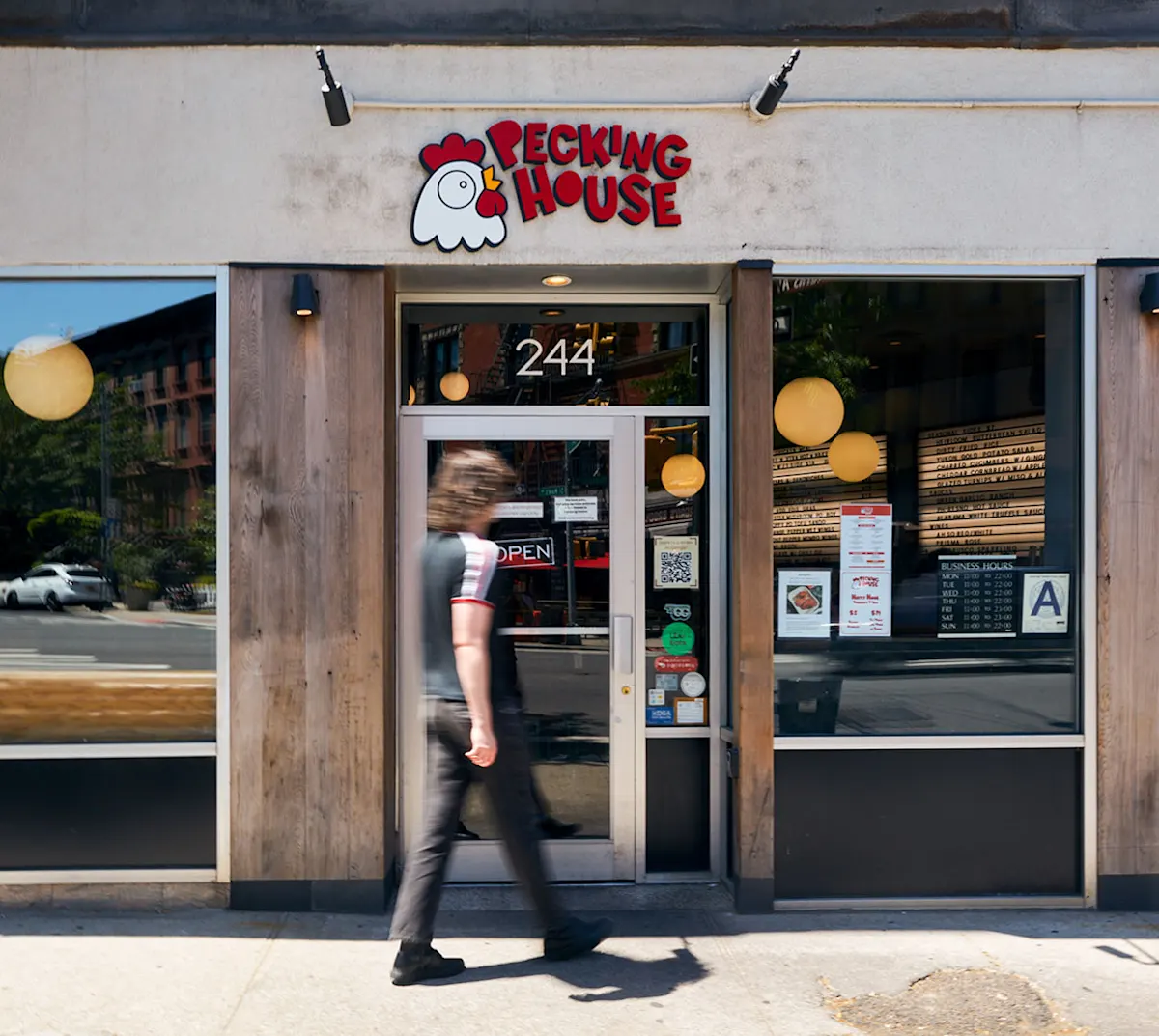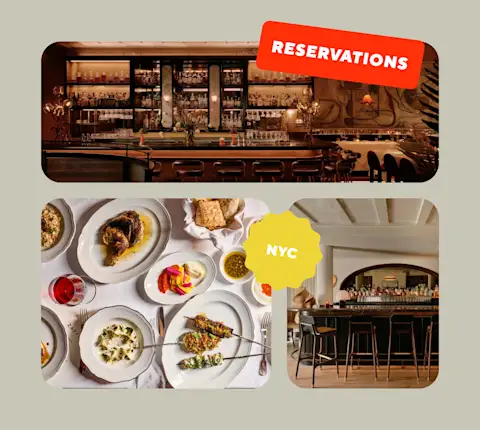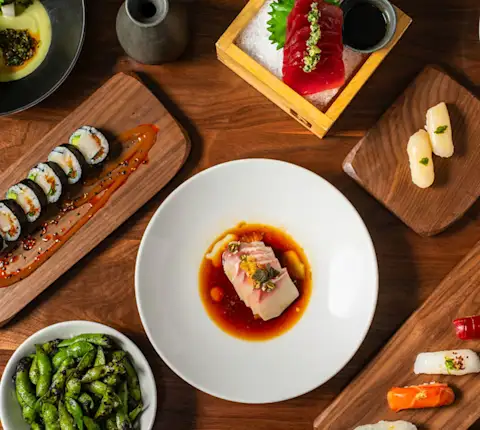*This article includes mentions of merchants or brands who are partners of DoorDash, and DoorDash may receive a commission if you choose to make a purchase from these merchants or brands.
How does a plate of fried chicken acquire a 10,000-person waitlist?
In some ways, Pecking House’s spicy fried chicken is a pandemic story. But it’s also a second-generation immigrant success story. And it’s a fancy-chef-gets-back-to-basics story.
Order from Pecking HouseIn the summer of 2020, chef Eric Huang was helping both his mother and his uncle keep their restaurants afloat. Six months prior, he’d been sous chef at Eleven Madison Park when it was considered the best restaurant in the world according to the influential S. Pellegrino rankings, he recalls. But now COVID threatened his family’s two restaurants, and so he used his four-star training — his bonafides also include Gramercy Tavern and Cafe Boulud — to help out.
His folks had opened the Chinese restaurant Peking House (no “c” in this restaurant’s name) in Queens 40 years ago, when they were new to the country. “We had a great run in the ’80s,” Huang says. After his dad died in 1998, his uncle took over the restaurant, and his mom went on to open Pearl East in Manhasset, Long Island. “Twenty five years later, she’s still crushing it,” Huang says with obvious pride.
As for Peking House, his uncle couldn’t afford to keep it running during COVID, so he closed its doors — but still had rent to pay. Huang started spending days there, in the kitchen he grew up in, developing recipes alone, trying to land on something that people would want to eat in those strange times. The big fryer sat there like a challenge.
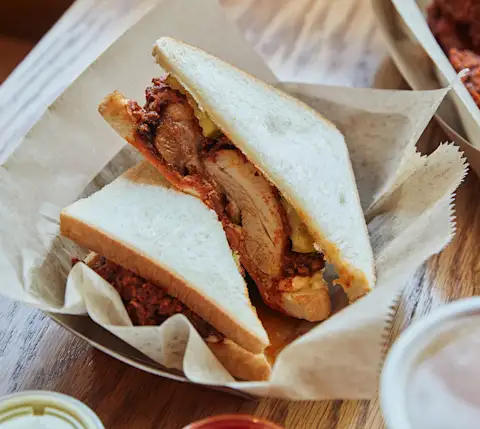
“I had never had authentic Nashville hot chicken, and it was becoming popular,” he says. He read recipes and watched videos on how to make it, brined the famously luxe D’Artagnan chickens in buttermilk, and “shopped around the restaurant pantry,” as he put it, adding five spice, Tianjin chili and Szechuan peppercorns to the flour batter. The result “was like KFC country-style fried chicken mashed up with a Szechuan-spicy málà overlay.”
He knew it was good. So in September 2020 he started selling the chili chicken to friends and posting about it on Instagram, naming the project Pecking House, a play on his family’s restaurant Peking House. He started a spreadsheet to keep the orders straight, and he delivered the chicken himself in his mini Honda Fit to Queens, Manhattan, and Brooklyn addresses. Keeping fried chicken crunchy and tasty for hours after it comes out of the fryer is a feat, one that Huang credits in part to EverCrisp, a modified starch that keeps food crispy. “It is a wheat dextrin that inhibits the movement of water, which is what makes food soggy,” explains Huang.
A few weeks into this chicken experiment, in October 2020, Bao Ong wrote a piece about it for a popular outlet. “I came home that night and there were thousands of messages in my inbox,” Huang recalls.
That spreadsheet just kept growing. “We were on a tear,” he said, “just getting press hit after press hit.” Out of necessity, Huang invented a system where people could place their orders on a password-protected Squarespace page; he would go down his spreadsheet, giving out the password to as many people as he could feed that week, maybe a few hundred. The system only added to the intrigue. “I didn’t mean for it to become a marketing tactic, but it did.” By February 2021 that waitlist was 10,000 people deep.
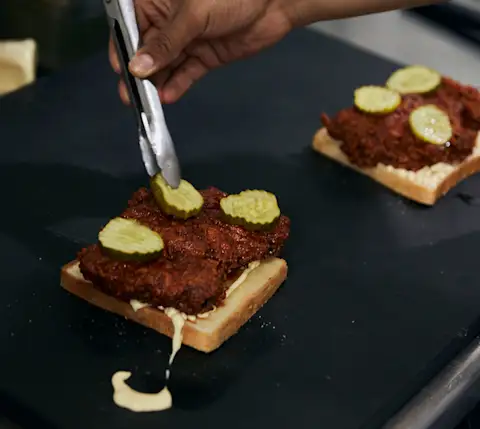
Huang was bowled over — not only by the chicken’s popularity but by what it meant to customers: “Obviously, people were super anxious and having a hard time during the pandemic. We got these really beautiful, heartfelt messages that I have saved to this day, saying things like, ‘I was thinking about leaving New York. It’s awful being trapped in my apartment all the time. But stuff like this is what makes me want to stay — fun experiences that you can’t get anywhere else.’”
So, the 40-year-old Peking House of Huang’s childhood officially became Pecking House. Huang started staffing up, but the Queens location was far from where most of the orders were coming from. So in 2022, after 40 years, they closed the doors in Queens, and he signed a lease on a place in Park Slope, “a hot zone for us in terms of delivery,” he explains.
“Trust me, I never expected this to be a thing,” he says. “I was just doing this to help my family out. But then I thought, ‘hey, this is a winning racehorse.’ I had worked in fine dining for 10 years, and that’s an ego-driven, self-centered art form. You want to express yourself on the plate, whereas fried chicken is just about as humble and approachable and likable as it gets.”
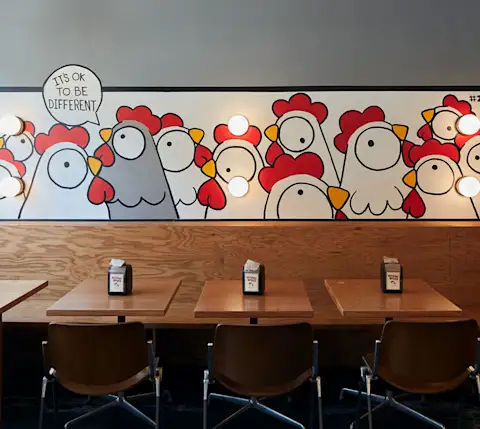
Once the restaurant opened in Park Slope, Huang sold his Honda Fit and enlisted DoorDash to handle the delivery logistics — and you can still order that same chili chicken. “It’s the foundation upon which the whole restaurant is built,” says Huang. “The recipe has not changed. The only thing we’ve changed is that we used to brush the oil on; now we dunk it. It is vibrantly red and thoroughly coated in chili oil.”
Beyond the modified starch, Huang goes to great lengths to keep his fried chicken crispy. Instead of ordering chicken parts that sit in a bag of their own juices, Huang asks for whole chickens that have been air-chilled. (The more usual, cheaper method is chilling chicken in an ice bath.) The point is to keep the chicken skin as dry as possible before it goes into the fryer. “All of these details add up to a better fried chicken,” says Huang.
During the pandemic, if you were lucky to get off the waitlist, $35 would have bought you a three-piece chicken meal. Now, the three-piece meal is miraculously cheaper ($30). That meal has four fried chicken options, all of which maintain Huang’s signature crunch: the original chili, extra hot (dipped in even spicier chili oil), salted egg yolk (bathed in a bright yellow eggy coating), and naked (mild, seasoned with a little vinegar powder and five spice).
The meal comes with two sides. “What makes fried chicken great is complementing it with really awesome sides,” Huang says. “You’re kind of having a picnic.”
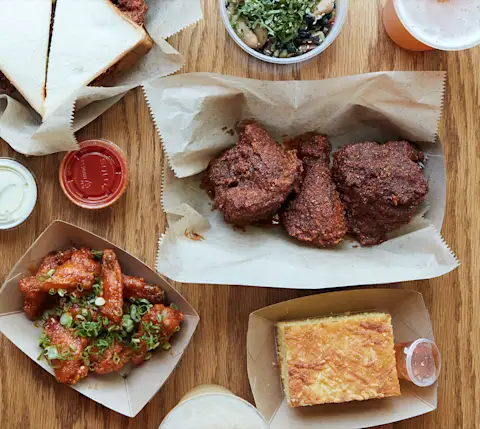
The dirty rice flecked with chicken liver and scallion feels like takeout rice that’s grown up and moved out of the house, while mushrooms, soy sauce, and sesame seeds zhuzh up the bean salad. Other menu highlights include charred, vinegared cucumbers in a creamy miso dressing and an outrageous peanut butter pudding with chocolate ganache and salty peanut brittle — packed separately to maintain its crunch.
The overall vibe is, as Huang describes, “Chinese takeout meets Southern restaurant.” Speaking of Chinese takeout, what does his mom think about all of this?
“She is proud of what I've achieved and has been nothing but supportive — if also opinionated! I am grateful. Most second-generation Asian immigrants are discouraged from entering the F&B industry that so many of our parents had to work in. It was seen as a squandering of their sacrifice to go back to such a difficult and unlucrative profession. But she truly loves hospitality and restaurants and was very supportive of me training as a chef. She just wishes that I still had my sights set on opening a Michelin-starred restaurant.”
For now, Huang is content to keep making the chicken that has made so many thousands of people happy. In fact, he just got the keys for a second location of Pecking House in Manhattan — and, lucky for you, it has absolutely no waitlist.
Order from Pecking House
PHOTO CREDIT: Paul Quitoriano


